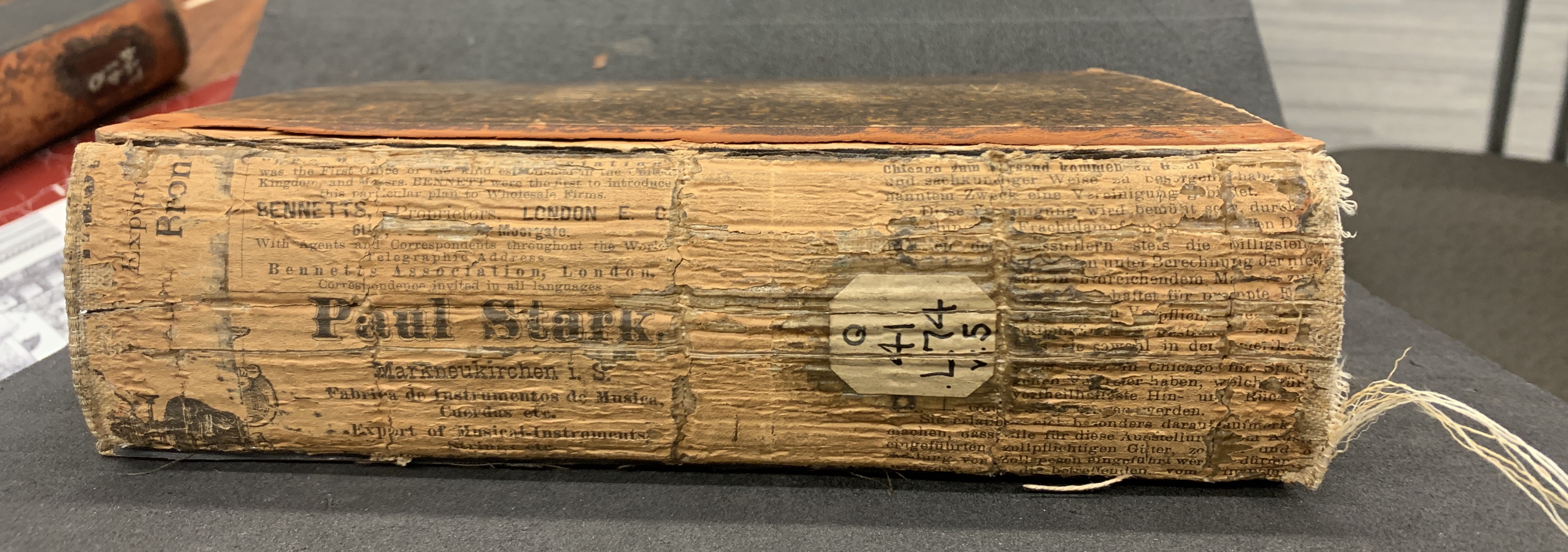While John Lowthorp’s abridgment of the Philosophical Transactions of the Royal Society of London came first, subsequent editors adopted the same organizational scheme and look. Most copies of Lowthorp’s abridgment have several sibling volumes.
The University of Chicago Library Hanna Holborn Gray Special Collections Research Center has the second volume of the second abridgment by Henry Jones. It also has both volumes of the third abridgment in the series by John Eames and John Martyn. Since these three separate works cover 1665–1700, then 1700–1720, then 1719–1733, their title pages have volume numbers in sequence. Thus we have volumes one, five, six, and seven. To summarize, we have,
| John Lowthorp, 1665-1700 | Henry Jones, 1700-1720 | J. Eames and J. Martyn, 1719–1733 |
|---|---|---|
| Printed London, 1705, | Printed London, 1721, | Printed London, 1743, |
| as volumes 1–3: | as volumes 4–5: | as volumes 6–7: |
| Q41.L74 v.1 | Q41.L74 v.5 | Q41.L74 v.6–7 |
In the picture above you can see the spine of volume five, lacking the original leather. The exposed backing material is a newspaper in German. Paul Stark, who seems to be selling musical instruments, was active at the end of the nineteenth century. The covers of the books have a gilt stamp for the University of Chicago. Here’s volume five,
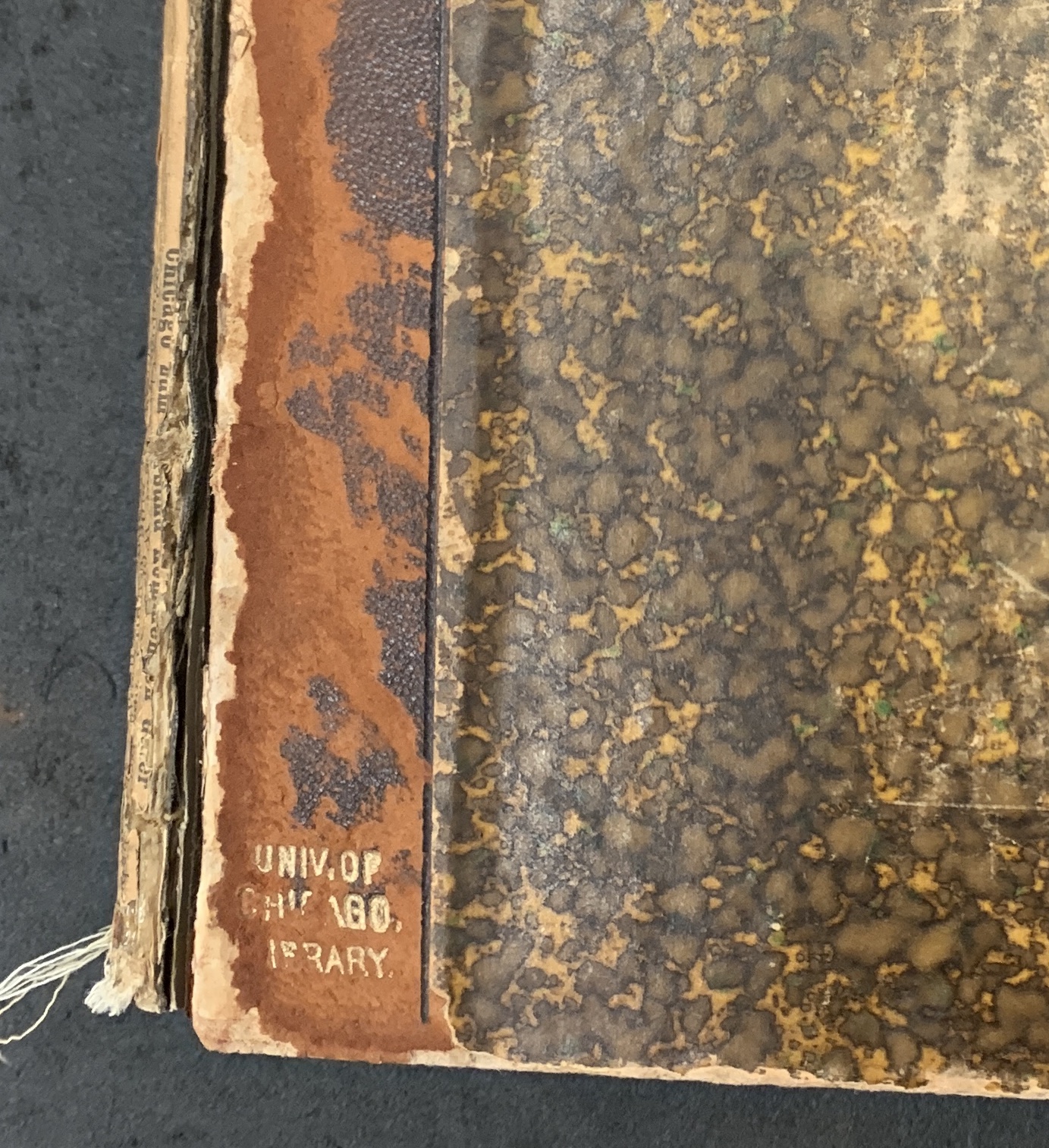
This is volume six,
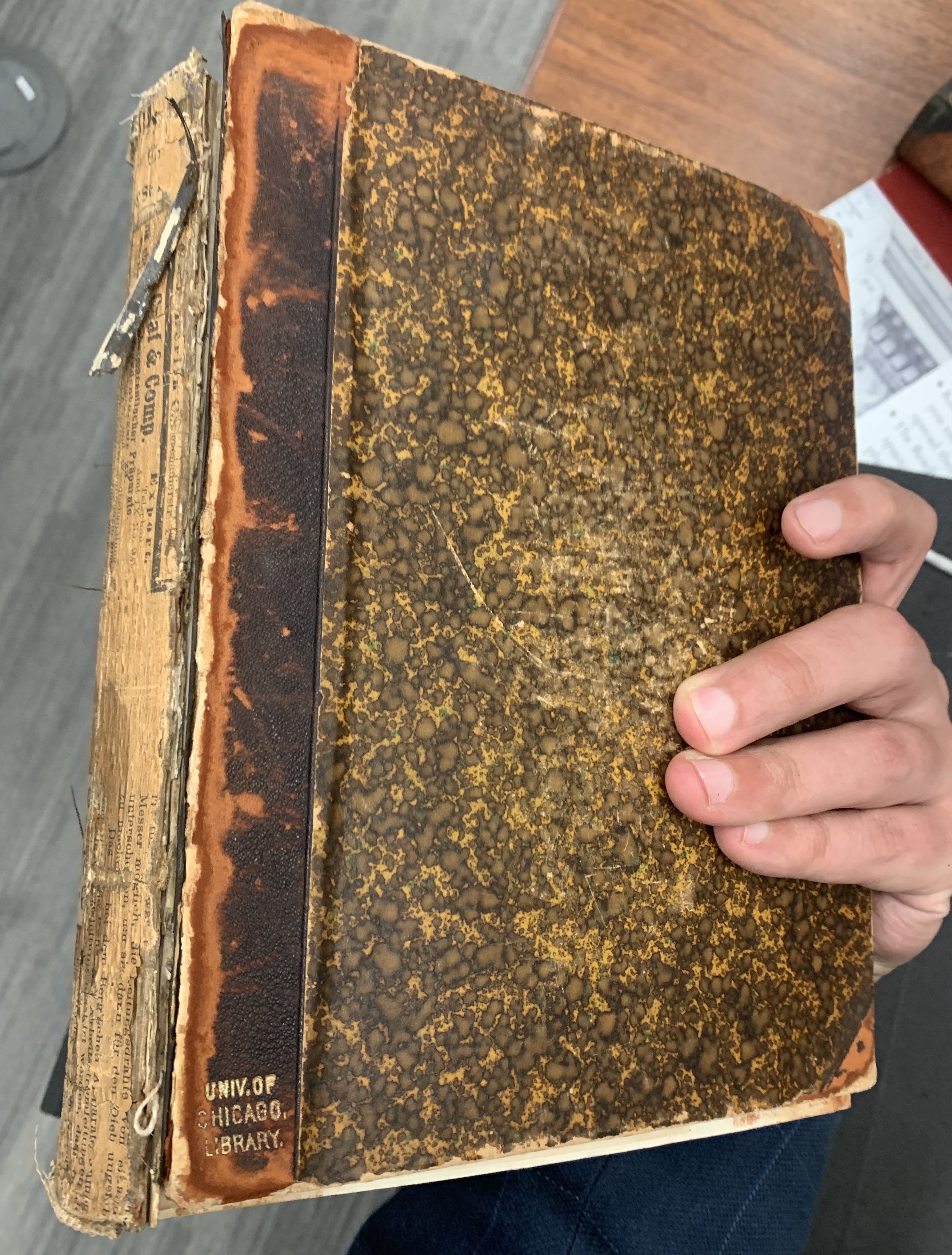
In both cases, we have badly worn morocco-grained institutional half sheep over light olive brown German marbled paper with pale yellow endpapers. The edges are hair vein marbled. The spine of volume six has also been exposed,
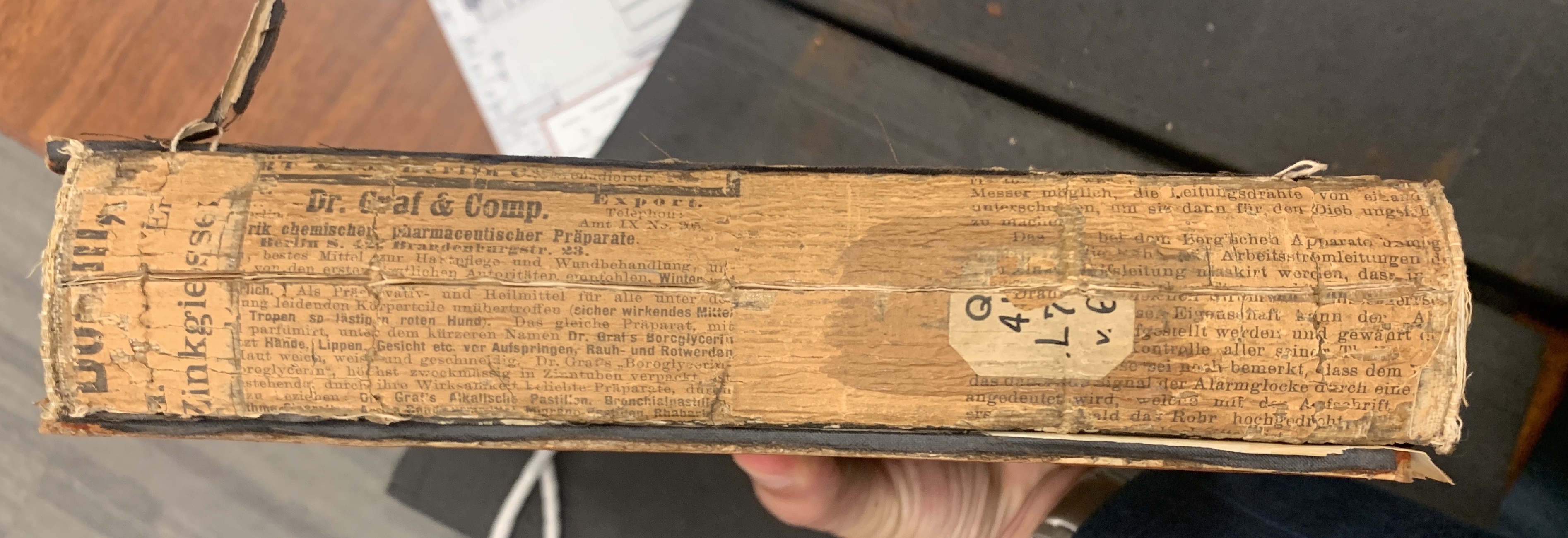
Dr. Graf seems to be a compounding pharmacist working in Berlin around the end of the nineteenth century. In both these cases, we have institutional bindings for the University of Chicago, but newspaper backing suggesting these bindings were late nineteenth-century German ones, or at least used nineteenth-century German newspapers as scraps to make the bindings. The marbled endpapers support this as well, though no where near as strongly as anyone could use the German-style marbled paper.
Lastly, we have a bookplate that has an important clue,
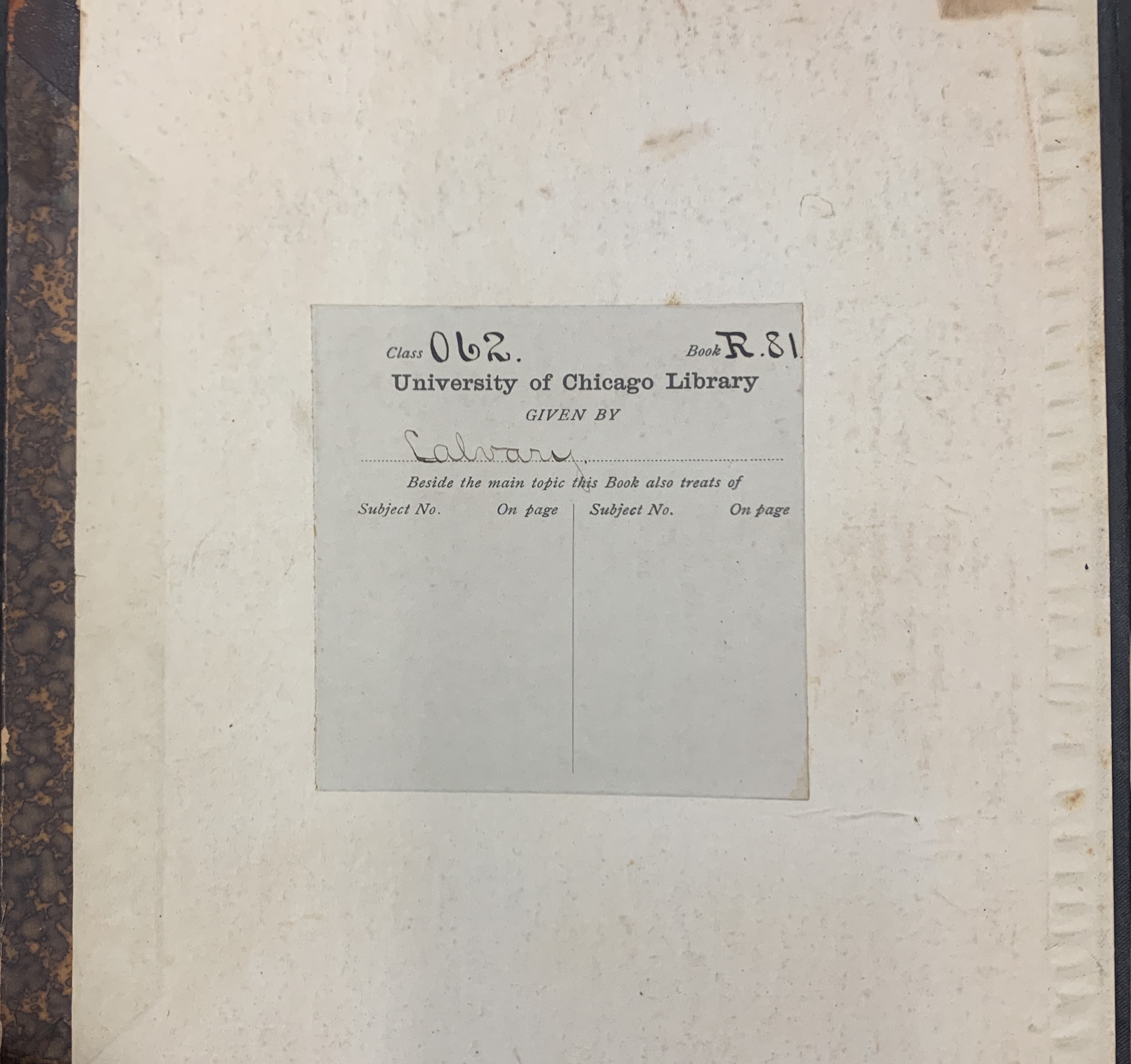
That the handwriting is similar to the numbers on volume one. These volumes also have similar numbers written later on. Those numbers are in sequence with those from the first volume. The plate records the book’s classification in the Dewey decimal system. Number “062” refers to Organizations in the British Isles or England. The University of Chicago libraries do not currently use Dewey’s decimal system, but this bookplate certainly does not look modern.
Note too that the book was given by “Calvary.” Not a first name and last name, but something or some group named Calvary.
Thus we have several volumes of abridgments in what seem to be nineteenth-century German bindings made for the University of Chicago. It is still not terribly clear yet how these scattered volumes got to North America.
